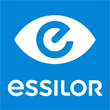- OT
- Industry
- Contact lenses
- Reinventing refraction
Advertorial
Reinventing refraction
95% of the population have more sensitive vision than the traditionally used correction steps of 0.25D, according to research


Advertorial content is paid for and produced by a sponsor, and is reviewed and edited by the OT team before publication.
30 September 2020
Research1 reveals that 95% of the population have more sensitive vision than the traditionally used correction steps of 0.25D.
Likewise, vision correction standards have barely evolved over the last 150 years. However, Essilor Ltd is reinventing refraction with Advanced Vision Accuracy (AVA).
Essilor’s research and development team analysed more than 100,000 vision parameters and found that a large percentage of people do realise the difference in their vision between a prescription precise to 0.01D compared to the traditional 0.25D.
This paved the way for an updated method of refraction, to replace the more traditional trial frame sight test and help offer the best visual solution for patients.
Advanced Vision Accuracy (AVA), which launched at the end of 2019, takes precision to a new level by allowing a registered practitioner to measure to one hundredth of a dioptre during an eye examination.
Advanced Vision Accuracy
Boasting speed and precision as its greatest benefits, the AVA process begins with a registered optometrist or ophthalmologist refracting a patient with the Vision-R800.
The Vision-R800 contains a breakthrough technology in a patented, automated optical module powered by digitally controlled motors. It provides simultaneous and instantaneous changes of sphere, cylinder and axis, to reach the final prescription more directly and faster, instead of examining these components individually.
You can also use the Vision-R800 to manually refract in 0.25D steps, allowing a practitioner the flexibility to tailor-make their own program using their refraction skills.
This higher-level refraction is then integrated into an Essilor premium lens design for a dispense which generates the highest level of dioptric precision into a lens, so the patient benefits from the full potential of their unique vision.
In practice
The module replaces the trial lenses, so makes for a much smaller and less cumbersome phoropter head. It can also operate up to seven metres away to help an optometrist conduct socially distanced eye exams.
The fact that it is a quicker refraction means the patient and practitioner are in contact for a much shorter period and physical proximity during the eye exam is reduced, which helps put everyone’s minds at rest.
It is also easier to clean and sanitise the phoropter head between patient appointments, rather than washing a trial frame and lenses after each use. This is another helpful time saver, especially given the current climate.
The future of refraction
Essilor is committed to its research and development efforts to unfold future improvements to lenses and ways in which optical practitioners can offer personalisation to patients, ensuring best vision correction.
It has teams of people working to ensure it continues to set the standard for lens designs and measuring solutions, to continue to improve lives by improving sight.
Case study
Essilor ECP and optometrist, James Allen, from David Inman Opticians, reported that AVA has helped the practice to improve the entire experience of eye examinations and allows them to offer the best visual solution for their patients by giving such an accurate prescription.
“We’ve been using AVA since it launched on all of our patients and they’ve been wowed by the clarity of their new glasses,’ Mr Allen said.
“The whole AVA process starts with a simplified eye examination with the Vision-R800, with a series of user-friendly ‘smart tests’, cameras to check the patient’s position, and electronic measurement of the near vision chart location.
“A big advantage at the moment is being able to operate it from two metres away and I feel much safer doing a refraction this way and minimising close contact. Patients have also expressed how much safer they feel being tested at a distance.”
“The refraction process has become very easy and patients say they feel more comfortable during the eye exam because they don’t have to wear the heavy glasses and can sit in a more natural position.
“The traditional method of refraction loses clarity as lenses are added, making it harder for people to perceive differences. The Vision-R800 reduces the error of adding an extra lens and patients say they can answer more accurately because there’s greater clarity in the difference.
“The equipment also allows us to flick between the prescriptions so the patients can appreciate the differences.
“The patient feels less fatigued thanks to a quicker sequence of tests with differences being easier to perceive, and as a consequence responses are easier to give resulting in more relaxed, happier patients.
“Overall, this helps give us a competitive edge and the ability to promise the most accurate lens possible to our patients.”
Reference
195% of population more sensitive than 0.25D. Study conducted by Essilor - 146 patients between 18yo and 65yo – Singapore – 2016

